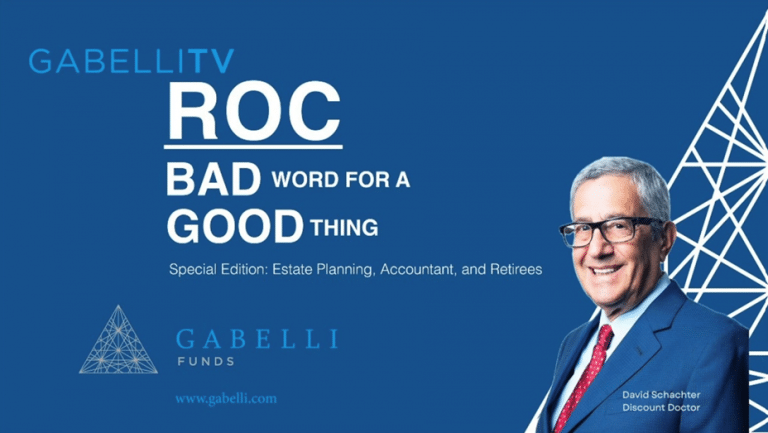2Q24 COMMENTARY
The second quarter was unusual in many ways, featuring a rare total solar eclipse, the unexpected release of a new Taylor Swift double album, 34 felony convictions of a former US president, three felony convictions of a son of the current US president, and election surprises to varying degrees in South Africa, India, Mexico, the UK, and France. 2Q stock market performance on the other hand was more orderly, with major indices grinding higher against a backdrop of low volatility. In the economy, data on both the growth and inflation fronts broadly softened throughout the quarter, suggesting that tighter monetary policy could (finally) be having its intended effect. That said, for now this softening appears contained to lower income consumers and interest rate sensitive business sectors. Most macro indicators support the view that the economy remains healthy overall, albeit with slowing momentum. Looking to the second half of the year, as central bank policy begins to shift from restrictive to neutral, equity investors will be heavily focused on earnings growth. We are confident that our portfolio of evergreen franchises and technology leaders will exhibit strong fundamentals even if economic growth continues to slow.
THE ECONOMY
Following a streak of “hot” data releases during the first quarter, second quarter data began to show broad-based signs of “cooling”. In the labor market, while most metrics still look healthy when viewed in a historical context, softer fundamentals over the last few months could signal slower growth in the months and quarters to come. The unemployment rate ticked higher during 2Q, from 3.8% in March to 4.1% in June. This dynamic stemmed from slower nonfarm payroll gains, which moderated from a ~270k/month average in 1Q to a ~180k/month average in 2Q. Indications of labor demand also started to roll, evidenced by the Bureau of Labor Statistics’ monthly JOLTS survey which shows a decline of nearly 1mm job openings in the latest reading compared with the start of the year. Additionally, jobless claims, generally regarded as a reliable leading indicator of the economic cycle, exited the quarter near a 52-week high on a rolling four-week average basis.
Similar late cycle dynamics were present in the consumer and manufacturing sectors. Real retail sales growth has flattened over the last several months. Relatedly, excess savings accumulated during the pandemic era have now been fully spent down according to a recent report published by the Federal Reserve Bank of San Francisco. Further, credit card loan balances deemed 90+ days delinquent have reached decade-highs and are well above pre-COVID levels, according to data from the New York Fed. On the manufacturing side of the economy, the purchasing managers’ index in the US softened notably in April and further deteriorated in May, suggesting that an encouraging start to the year may have been more of a “head fake” than an “all clear” signal. Reflecting these data releases, the Atlanta Fed’s widely followed GDPNow model revised its 2Q US GDP outlook from a 3.9% initial forecast (published in April) to a 1.5% final forecast (published in July). Still healthy, but clearly softening.
Importantly, slower growth observed during the second quarter has been mirrored by an encouraging continuation of disinflationary trends. The Federal Reserve’s preferred measure, the core personal consumption expenditures deflator, decelerated to just 2.6% y/y in May – the lowest reading since early-2021 (and closing in on the Fed’s 2% inflation target). Among the market’s preferred measures, May’s “super-core” CPI reading (which excludes volatile and subjective components like food, energy, shelter, and rent) surprisingly printed negative m/m and provided officials incremental confidence that restrictive monetary policy is having its intended effect. Given these developments the rates market is now pricing in a 95% chance that the Fed begins cutting its policy rate in September – for context, odds of a September rate cut were closer to 40% earlier in the second quarter.
Some market participants are now wondering whether the US economy may be starting to slow too much, too quickly. This contrasts with the backdrop from earlier in the year, when it appeared that the economy could be overheating and inflation re-accelerating.
Encapsulating these points, in recent Senate testimony Fed Chair Powell plainly stated that we are at the point where “elevated inflation is no longer the only risk we face”.
FINANCIAL MARKETS
Slower (though not recessionary) growth, combined with incremental confidence on the path of inflation, was a good recipe for risk assets during 2Q – though gains came at a less convincing pace than was seen to start the year. The S&P 500 returned 3.9% in the quarter, following a 10.2% return in 1Q. Investment Grade corporate bond spreads fared similarly, ending the quarter directionally unchanged from 1Q levels, though still near multi-decade lows. High Yield spreads are also tight in historical context though have drifted higher over the last several weeks – potentially reflecting some concern around the economic outlook. Rising yield spreads, should they continue, are cautionary at best.
Looking more closely at the stock market in 2Q, performance of large caps vs. small caps, and of growth vs. value, further diverged compared with the prior quarter. The encouraging broadening out of performance we flagged towards the end of 1Q reversed course in 2Q, as the “Magnificent 7” technology stocks contributed more than 100% of the S&P 500 Index’s return in the quarter (compared with roughly 1/3 of the index’s return in 1Q). Indeed, the “S&P 493” return was negative in 2Q (market cap weighted), whereas every Magnificent 7 member had a positive return in the quarter.
While such narrow index performance has historically been associated with eroding investor confidence, strong fundamentals of the Magnificent 7 are notable, and suggest that perhaps this time is different. Specifically, these seven companies are expected to contribute ~65% of total S&P 500 earnings growth this year. Further, the group has collectively accounted for ~70% of total S&P 500 earnings estimate revisions year-to-date. Thus, when viewed in the context of such large contributions to the index’s earnings growth and estimate revisions, the group’s ~60% contribution to index performance in 1H does appear to be grounded in fundamentals. Full disclosure: The Gabelli Growth Fund owns six of the Magnificent 7, Tesla being the exception.
As for valuation, the S&P 500 now trades at 22x forward earnings, a level which screens on the rich side vs. history (roughly one turn below the 10-year high) and similarly screens as full in the context of prevailing fixed income yields (for example, the S&P 500 earnings yield at 4.5% is below an investment grade credit index yield at 5.8%). While not necessarily a cause for concern in isolation, full equity valuations leave less room for disappointment and represent greater downside risk if earnings expectations do not come to fruition.
Given an unanchored and often volatile yield curve over much of the past three years, changes in valuation multiples, rather than company fundamentals, have had a greater than normal impact on equity market returns recently. With monetary policy and interest rate volatility beginning to normalize, earnings growth should again become the primary driver of stock prices, as has historically been the case. Potentially relevant to this discussion is the fact that in each of the last two recessions, the stock market moved higher only as economic growth recovered, and continued to decline well after the commencement of cuts in the Fed Funds Rate. Thus, we could be entering a phase where the market responds with heightened sensitivity to changes in earnings growth expectations.
ARTIFICIAL INTELLIGENCE
A large artificial intelligence investment cycle is now underway, and early beneficiaries are emerging in the semiconductor and data center infrastructure sectors. Companies and governments alike are investing enormous amounts of capital in AI – an encouraging signal about the longer-term promise of the technology. Amazon has announced more than $50bn of new data center projects in the first half of 2024 alone, Microsoft is reportedly planning on doubling its pace of new data center capacity expansion over the next six months, and Eaton Corporation management raised its data center market outlook in May and now expects 25% compound growth over the coming three years, up from a 16% outlook published just six months prior. These infrastructure projects will dramatically increase demand for power and associated plant and equipment, and therefore represent a compelling incremental growth opportunity for many industrial specialists over the coming years.
Thus far, most of the financial returns on AI capital investments that companies have discussed have been limited to cost savings and productivity gains. Traction on the revenue generation side has been more limited, though there is no shortage of strong anecdotal early momentum. OpenAI, a leading foundation model company, disclosed $3.4bn in annual recurring revenue as of May, up 580% y/y and up 70% from the end of last year. ServiceNow’s Pro+ SKU, which includes generative AI functionality, has been the company’s fastest-growing product in history through its first two quarters despite a premium price point. Microsoft’s GitHub Copilot, a generative AI-powered coding tool, has amassed nearly 2mm subscribers less than two years after launching. While these financial contributions are not yet commensurate with the scale of investment dollars being put towards AI, the pace of growth is nonetheless encouraging.
LOOKING FORWARD
With a mixed view on growth and valuations leaving less room for error, we enter 3Q with a slightly more measured approach to risk taking. We are balancing reasons for optimism (a reasonably healthy economy, the promise of AI, and confidence among high-income consumers and large businesses) with discipline to reflect uncertainty around dynamics like monetary policy lags, slowing economic growth, rising debt burdens, and of course, the upcoming US election cycle.
John T. Belton, CFA
Howard F. Ward, CFA
Howard Ward and John Belton are CO-Portfolio Managers of The Gabelli Growth Fund









